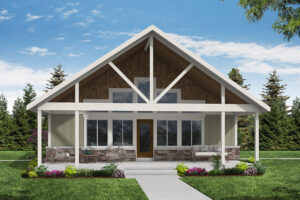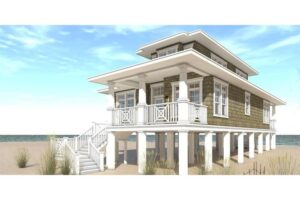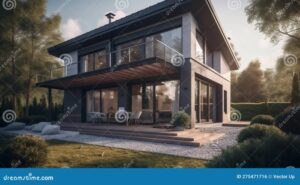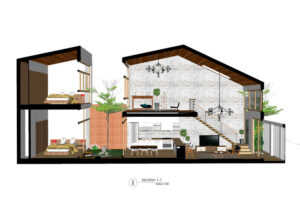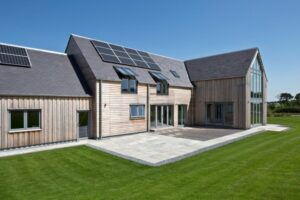
High SEER air conditioners are revolutionizing the way we think about cooling our homes, merging comfort with sustainability. Not only do they promise a cooler environment during the sweltering summer months, but they also make a significant impact on energy consumption and savings.
Understanding the SEER rating—Seasonal Energy Efficiency Ratio—can help homeowners make informed choices that benefit both their wallets and the environment. As we delve deeper into the benefits and features of high SEER units, you’ll discover how they stand apart from standard models and why they’re becoming a must-have in modern homes.
High SEER Air Conditioners Overview
High SEER (Seasonal Energy Efficiency Ratio) air conditioners are designed to provide exceptional cooling efficiency during warmer months. The significance of SEER ratings lies in their ability to indicate how effectively an air conditioning unit will operate, particularly in terms of energy consumption. A higher SEER rating means greater efficiency, which translates to lower energy bills and a smaller carbon footprint.The benefits of high SEER air conditioners compared to standard models are numerous.
For instance, while a typical air conditioner may have a SEER rating of 13 or 14, high SEER units often boast ratings of 16 or higher. This not only means that they use less energy to cool your home but also that they can maintain consistent temperatures more effectively, ensuring optimal comfort throughout the day.
Energy Efficiency Metrics Related to High SEER Units
Understanding the metrics that showcase the energy efficiency of high SEER air conditioners is essential for homeowners looking to make informed decisions. Below are some key metrics and examples that underline the energy efficiency of high SEER units:
- Annual Energy Consumption: High SEER units typically consume less energy annually compared to their lower-rated counterparts. For example, a high SEER unit with a rating of 20 may consume approximately 30% less energy annually than a standard unit with a SEER rating of 13.
- Cost Savings: Higher efficiency leads to significant cost savings. A household using a high SEER air conditioner could save hundreds of dollars over the lifespan of the unit. For instance, if a higher SEER model costs about $1,200 more upfront, it can save up to $500 in energy bills within the first five years.
- Environmental Impact: Higher SEER ratings contribute to reduced greenhouse gas emissions. For every 1% increase in efficiency, there is a corresponding decrease in CO2 emissions, which is crucial for tackling climate change.
- Performance in Varied Climates: High SEER air conditioners perform better in extreme temperatures. They are engineered to handle higher cooling loads effectively, making them suitable for regions with long, hot summers.
“Choosing a high SEER air conditioner not only enhances comfort but also represents a significant investment in energy efficiency and environmental responsibility.”
Overall, the metrics associated with high SEER air conditioners provide a compelling case for their adoption, showcasing both economic and ecological advantages for homeowners.
Energy Savings and Environmental Impact

High SEER (Seasonal Energy Efficiency Ratio) air conditioners are becoming increasingly popular in households due to their efficiency and potential for energy savings. These systems not only provide comfort during the hot months but also contribute significantly to reducing energy consumption, which has a direct positive impact on both household budgets and the environment.High SEER air conditioners operate more efficiently than their lower-rated counterparts, which results in lower electricity bills and a smaller carbon footprint.
For instance, a unit with a SEER rating of 16 can save homeowners an estimated 30% to 50% on cooling costs compared to older systems with SEER ratings of 10 or lower. Over a period of years, this can translate into substantial savings.
Energy Savings Statistics
The energy savings associated with high SEER air conditioners are not merely theoretical; they are backed by statistics and studies. Here are some important points regarding the energy-saving potential of these systems:
- According to the U.S. Department of Energy, upgrading from a 10 SEER unit to a 16 SEER unit can save approximately 1,000 kWh per year.
- In a typical household, this annual saving can translate to about $100 to $150, depending on local electricity rates.
- Over a 10-year period, the cumulative savings can exceed $1,500, making the initial investment worthwhile.
- Furthermore, energy-efficient systems often qualify for rebates and incentives, which can further offset the purchase and installation costs.
High SEER air conditioners directly lead to reduced energy consumption, which helps utilities better manage demand and reduce strain on the grid. This is particularly crucial during peak summer months when electricity usage typically spikes.
Environmental Benefits
Utilizing high-efficiency air conditioning systems not only benefits consumers financially but also contributes positively to the environment. The following points illustrate the environmental impact of high SEER units:
- Reduced greenhouse gas emissions: By consuming less energy, high SEER air conditioners help lower the carbon emissions associated with electricity generation, which is often derived from fossil fuels.
- Decreased air pollution: Less energy consumption means fewer pollutants released into the atmosphere, thereby improving air quality.
- Conservation of natural resources: With lower energy demand, there’s reduced pressure on natural resources used for power generation, such as coal, natural gas, and water.
Using high SEER air conditioning systems can play a significant role in the collective effort to combat climate change while promoting energy efficiency.
The investment in high SEER air conditioners reflects a commitment not only to personal comfort but also to a sustainable future, showcasing that energy efficiency and environmental responsibility can go hand in hand.
Selecting the Right High SEER Air Conditioner
Choosing the right high SEER air conditioner for your home is crucial not only for comfort but also for energy efficiency and cost savings. With numerous options available, it can be overwhelming to identify which model best suits your specific needs and preferences. This guide will navigate through the key factors to consider, provide comparisons of various brands and models, and offer a checklist for evaluating your cooling requirements.
Key Factors in Selecting a High SEER Air Conditioner
When selecting a high SEER air conditioner, several critical factors should be taken into account to ensure optimal performance and efficiency:
- Cooling Capacity: The cooling capacity, measured in BTUs (British Thermal Units), indicates the amount of heat the unit can remove from the air. It’s essential to choose a unit that matches the size of your home for efficient cooling.
- Energy Efficiency Ratio: The SEER rating is a key measure of energy efficiency. Higher SEER ratings indicate better energy performance, translating into lower electricity bills over time.
- Warranty and Support: A solid warranty and customer support from the manufacturer can give you peace of mind. Look for brands that offer comprehensive coverage for parts and labor.
- Noise Levels: Consider the noise levels of the unit, especially if it will be installed near living spaces. Look for models designed to operate quietly.
- Smart Features: Many modern units come equipped with smart technology, allowing for remote control and integration with smart home systems, which can enhance convenience and efficiency.
Comparison of Brands and Models with High SEER Ratings
Several brands stand out in the market for their high SEER air conditioners. Here’s a brief comparison of a few notable models and their specifications:
| Brand | Model | SEER Rating | Cooling Capacity (BTUs) | Key Features |
|---|---|---|---|---|
| Trane | XV20i | 22 | 2,600 | Variable speed compressor, Wi-Fi enabled, quiet operation |
| Carrier | Infinity 26 | 26 | 2,000 | Smart technology, two-stage cooling, advanced filtration |
| Lennox | SLS | 23.5 | 2,400 | Compact design, quiet operation, energy-efficient |
| Rheem | Prestige Series | 20 | 3,000 | EcoNet technology, high humidity control, reliable performance |
This comparison highlights some of the best options available, showcasing their energy efficiency and distinct features, helping homeowners make an informed choice.
Homeowner Checklist for Evaluating Cooling Needs
To ensure you select the most appropriate high SEER air conditioner, consider using the following checklist to evaluate your specific cooling needs and preferences:
- Home Size: What is the square footage of the space you need to cool?
- Existing Insulation: How well insulated is your home?
- Climate: What is the typical climate in your area? (hot, humid, dry, etc.)
- Usage Patterns: How often do you use your air conditioner and for how long each day?
- Budget: What is your budget for the initial purchase and installation?
By assessing these factors, homeowners can better understand their cooling requirements and choose the right high SEER air conditioner that meets their needs efficiently and effectively.
Installation and Maintenance of High SEER Air Conditioners
Installing a high SEER air conditioner is crucial not only for achieving optimal energy efficiency but also for ensuring the unit operates effectively throughout its lifespan. Proper installation impacts the overall performance, and it is essential to follow specific guidelines to achieve the best results. The installation process for high SEER air conditioners typically involves several key steps, including selecting the right location, mounting the indoor and outdoor units, connecting refrigerant lines, and ensuring proper electrical connections.
Hiring a qualified HVAC professional is highly recommended, as they possess the expertise needed to handle refrigerant levels, electrical wiring, and local building codes. A successful installation leads to better energy savings and longer equipment life.
Regular Maintenance Practices
To ensure the longevity and efficiency of a high SEER air conditioner, it is important to implement regular maintenance practices. Routine maintenance not only helps in identifying potential issues before they become serious but also maintains optimal performance throughout the cooling season. Key maintenance tasks include:
- Changing or cleaning air filters: Clogged filters reduce airflow and efficiency. Regularly replacing or cleaning them every 1-3 months is essential.
- Inspecting and cleaning the outdoor unit: Debris should be cleared from around the condenser and the coils should be cleaned to enhance heat exchange.
- Checking refrigerant levels: Low refrigerant can indicate leaks. Ensuring proper levels maintains efficiency and prevents damage.
- Inspecting electrical components: Regular checks of wiring, connections, and the thermostat help prevent electrical failures and enhance safety.
- Scheduling annual professional maintenance: A certified technician can perform comprehensive inspections and tune-ups to ensure peak performance.
Troubleshooting Common Issues
Understanding common issues that may arise with high SEER air conditioners can help homeowners address problems quickly and effectively. Some typical problems include inadequate cooling, unusual noises, or frequent cycling on and off. Common troubleshooting tips include:
- For inadequate cooling, check the thermostat settings and ensure it is set to a lower temperature than the current room temperature. Also, inspect filters for cleanliness.
- If unusual noises are heard, such as grinding or rattling, check for loose components or debris within the unit that could be causing obstructions.
- Frequent cycling may be a sign of an oversized unit or improper thermostat placement. Verify that the thermostat is not affected by heat sources such as sunlight or appliances.
- In the case of water leaks, ensure the condensate drain is clear of blockages to allow proper drainage.
Maintaining and troubleshooting high SEER air conditioners not only promotes comfort but also preserves energy efficiency and supports the environment by reducing unnecessary energy consumption.
Integration with Home Furniture and Decor
High SEER air conditioners are not just about energy efficiency; they can also seamlessly blend into your home’s aesthetic, enhancing both comfort and style. Integrating these units into your living space requires thoughtful consideration of design elements, as well as strategic furniture placement that maximizes airflow and cooling efficiency. When selecting furniture and decor for spaces with high SEER air conditioners, ensure you choose items that complement the system’s functionality while maintaining a cohesive look.
A well-planned integration can elevate the appeal of your home and support a comfortable environment. Here’s how to achieve that.
Furniture Placement for Optimal Airflow
Effective placement of furniture can significantly enhance the cooling efficiency of your high SEER air conditioner. Here are some key considerations for arranging your furniture:
- Keep Air Vents Clear: Ensure that furniture does not obstruct air vents or return ducts. This allows the cool air to circulate freely throughout the room, ensuring consistent temperatures.
- Utilize Open Spaces: Arrange seating and other furniture to create open pathways for airflow. Avoid placing large items in the direct path of the air conditioner.
- Consider Room Layout: Position furniture in a way that allows for even distribution of air. For example, if the air conditioner is on one wall, consider positioning seating away from that wall for balanced cooling.
- Avoid Heat-Generating Appliances: Keep lamps, televisions, and other heat-generating electronics away from the air conditioner. These can raise the ambient temperature and cause the system to work harder.
- Use Multi-functional Furniture: Consider furniture pieces that serve multiple purposes, such as ottomans that can double as storage. This helps in maintaining a less cluttered space while promoting airflow.
Selecting Complementary Furniture
Choosing furniture that complements energy-efficient systems not only supports better airflow but also enhances the overall design of your home. Here are a few tips for selecting the right pieces:
- Lightweight Materials: Opt for furniture made from lightweight materials like rattan or aluminum, which do not retain heat as much as heavier materials do.
- Color Choices: Select lighter-colored fabrics and surfaces that reflect heat rather than absorb it, contributing to a cooler environment.
- Textured Fabrics: Use breathable fabrics such as linen or cotton, which allow for better air circulation and comfort, making your space feel cooler.
- Modular Designs: Modular furniture can be rearranged easily, allowing you to adjust your layout based on seasonal cooling needs or to accommodate changes in airflow.
- Indoor Plants: Incorporate indoor plants that can help improve air quality; they not only add aesthetic value but also help maintain a comfortable environment.
“Incorporating high SEER air conditioners into your living space is not just about functionality; it’s about enhancing your home’s overall aesthetic and comfort level.”
Green Living and High SEER Air Conditioners
High SEER (Seasonal Energy Efficiency Ratio) air conditioners play a pivotal role in promoting sustainable living practices. By utilizing high-efficiency cooling systems, homeowners can significantly reduce their energy consumption and carbon footprint. This not only contributes to individual savings but also aligns with broader environmental goals by fostering a culture of eco-consciousness.High efficiency cooling solutions are integral to green home initiatives as they are designed to operate with minimal energy usage while providing optimal comfort.
The adoption of high SEER air conditioners can result in substantial reductions in electricity consumption, leading to lower utility bills and a decrease in greenhouse gas emissions. According to the U.S. Department of Energy, upgrading from a 10 SEER to a 16 SEER unit can lead to energy savings of up to 60%.
Combining High SEER Air Conditioning with Eco-Friendly Home Improvements
Integrating high SEER air conditioners with other eco-friendly home upgrades maximizes overall efficiency and sustainability. This synergistic approach can transform a standard home into a green living space, enhancing both comfort and environmental impact. Consider the following methods to achieve this:
Insulation and Sealing
Proper insulation reduces the load on air conditioners. Sealing ductwork and windows ensures that cool air stays inside, making high SEER units even more effective.
Energy-Efficient Windows
Installing double or triple-glazed windows minimizes heat transfer, allowing high-efficiency air conditioners to work less while maintaining indoor comfort.
Smart Thermostats
Utilizing programmable or smart thermostats can optimize cooling cycles, ensuring that high SEER air conditioners operate only when necessary, further conserving energy.
Solar Panels
Pairing high SEER air conditioners with solar energy systems can significantly reduce reliance on the grid. This renewable energy source powers the cooling system, making it even more sustainable.
Landscaping for Shade
Planting trees or installing awnings can provide natural shade and reduce the heat load on air conditioning systems, enhancing their efficiency.By adopting these improvements in conjunction with high SEER air conditioning, homeowners not only reduce their carbon footprint but also create a more sustainable and comfortable living environment. The combination of these eco-friendly practices embodies the principles of green living, ultimately benefiting both the homeowner and the planet.
Heating and Air Conditioning Trends
The landscape of heating and air conditioning technology is evolving rapidly, with high SEER (Seasonal Energy Efficiency Ratio) ratings leading the charge in energy efficiency. As consumers grow increasingly aware of their environmental footprint and energy costs, the demand for high-efficiency cooling solutions has surged. This shift is not just a fleeting trend; it’s reshaping the HVAC industry, making high SEER air conditioners a central focus for manufacturers and homeowners alike.Current innovations in HVAC systems are not only about achieving higher SEER ratings but also about integrating smart technology for better performance and user convenience.
High SEER air conditioners are at the forefront of these changes, offering significant energy savings over traditional units while also enhancing indoor comfort. As technology advances, the comparison between these high-efficiency units and other innovations becomes crucial for informed choices.
Integration of Smart Technology
The integration of smart technology in high SEER air conditioning systems is a key trend shaping the future of HVAC. Smart thermostats and home automation systems enable users to monitor and control their heating and cooling systems remotely, leading to more efficient energy usage. Key features of smart technology in HVAC include:
- Remote Control: Homeowners can adjust their air conditioning settings from their smartphones, allowing for precise temperature control even when they are not home.
- Learning Capabilities: Some smart thermostats learn the homeowner’s schedule and preferences, automatically adjusting temperatures for optimal comfort and energy savings.
- Energy Monitoring: Smart systems provide insights into energy usage, helping users make informed decisions about their HVAC operation and identify areas for improvement.
“Smart technology in HVAC not only enhances comfort but also promotes energy savings, making high SEER units more effective.”
Comparative Analysis with Other HVAC Innovations
When comparing high SEER air conditioners with other recent innovations in the HVAC sector, it’s clear that while energy efficiency is paramount, factors such as air quality and system versatility also play critical roles. Innovations such as variable refrigerant flow (VRF) systems and geothermal heat pumps show how these technologies complement high-efficiency air conditioners. Some noteworthy aspects include:
- Variable Refrigerant Flow (VRF): These systems provide precise temperature control in different zones of a home, achieving high efficiency while maintaining comfort across varying spaces.
- Geothermal Heat Pumps: Utilizing the earth’s stable underground temperature, these systems offer remarkable energy efficiency, often exceeding traditional high SEER units in energy savings.
- Enhanced Air Filtration: New HVAC systems are incorporating advanced filtration technology, improving indoor air quality and overall health benefits.
Future Prospects for High Efficiency Cooling Technologies
The future of high-efficiency cooling technologies looks promising, with ongoing research and development focused on making air conditioning even more efficient and environmentally friendly. Expectations include:
- Increased SEER Ratings: As technology progresses, manufacturers are expected to produce units with SEER ratings surpassing those currently available, further reducing energy costs.
- Environmentally Friendly Refrigerants: The shift towards refrigerants with lower global warming potential is vital. New alternatives are being developed to not only meet regulatory standards but also improve overall system efficiency.
- Integration with Renewable Energy Sources: Future air conditioning systems are likely to pair with solar energy systems, maximizing efficiency and sustainability while lowering reliance on fossil fuels.
“The drive for high efficiency in cooling technologies is not just about saving money; it’s about leaving a healthier planet for future generations.”
Home Inspections and High SEER Air Conditioners
The significance of inspecting high SEER (Seasonal Energy Efficiency Ratio) air conditioners during home inspections cannot be overstated. These high-efficiency systems are designed to provide optimal cooling while using less energy, making them an essential feature in modern homes. Home inspectors must evaluate these units thoroughly, as their condition and efficiency can greatly influence both the comfort of the home and its market value.Inspectors should look for specific aspects that determine the effectiveness and efficiency of high SEER air conditioners.
The following checklist highlights key areas to evaluate, ensuring that potential buyers are well-informed about the HVAC system’s performance.
Inspection Checklist for High SEER Air Conditioners
A comprehensive checklist assists home inspectors in assessing the performance and condition of high SEER air conditioners. The following points are crucial for an efficient evaluation:
- Verify the SEER rating: Ensure the unit meets or exceeds the minimum SEER requirements based on the region.
- Check the age of the unit: Determine the installation date to evaluate remaining lifespan and efficiency potential.
- Inspect the ductwork: Look for leaks or blockages that could hinder airflow and efficiency.
- Examine refrigerant levels: Adequate refrigerant is essential for optimal performance; low levels can indicate leaks.
- Assess overall maintenance history: Regular maintenance can extend the life of the unit and maintain efficiency.
- Evaluate thermostat functionality: Ensure the thermostat is functioning correctly and accurately reflects indoor conditions.
- Look for signs of wear or damage: Check for rust, corrosion, or other indicators that may signal potential issues.
- Analyze energy consumption: Review energy bills to assess historical efficiency and operational costs of the unit.
High SEER ratings not only enhance energy efficiency but also play a crucial role in determining a home’s appraisal value. Homes equipped with high SEER air conditioning systems can attract more buyers, as they signify lower utility costs and increased comfort. As energy efficiency becomes a more significant factor for homebuyers, properties featuring high-efficiency HVAC systems are likely to command higher market values.
Higher SEER ratings can significantly impact both comfort levels and overall home valuation, making them a key consideration during the appraisal process.
Planning for High SEER Air Conditioning Systems

Incorporating High SEER (Seasonal Energy Efficiency Ratio) air conditioning systems into your home design requires careful planning and consideration of various factors. This approach not only improves energy efficiency but also enhances indoor comfort and reduces environmental impact. By understanding design strategies, duct layout, and budgeting, homeowners can successfully implement these advanced cooling systems.
Design Strategies for Incorporating High SEER Air Conditioners
When planning the integration of a High SEER air conditioning system, several design strategies can facilitate optimal performance and efficiency. These strategies include:
- Location Selection: Position air conditioning units away from direct sunlight and other heat sources to maximize efficiency. A shaded area can help maintain lower temperatures within the system.
- Size Appropriateness: Ensure the selected unit is appropriately sized for the space. An undersized unit will struggle to cool, while an oversized one will cycle on and off frequently, reducing efficiency.
- Open Floor Plans: Design open spaces to allow for better air circulation. High ceilings and strategically placed furniture can also enhance airflow.
- Window Placement: Consider the placement of windows to utilize natural ventilation when possible, reducing reliance on air conditioning. Use of energy-efficient windows can further lower cooling demands.
- Insulation Quality: High-quality insulation reduces the cooling load on the air conditioning system. Adding insulation in attics and walls can significantly improve efficiency.
Planning Duct and Vent Layout
The layout of ducts and vents plays a crucial role in the performance of High SEER air conditioning systems. An effective plan ensures that cool air is distributed evenly throughout the home. Key considerations include:
- Centralized Duct Design: A centralized duct layout allows for improved airflow and temperature consistency. Ensure ducts are insulated to prevent energy loss.
- Vent Placement: Strategically position vents near heat-generating appliances or in rooms that receive direct sunlight. This ensures that cooling is directed where it’s most needed.
- Minimized Duct Length: Shorter duct runs reduce resistance and energy loss. Plan the ductwork to minimize bends and turns.
- Balancing Dampers: Utilize balancing dampers to adjust airflow and ensure even distribution throughout all rooms. This helps maintain consistent temperature levels.
- Maintenance Accessibility: Design the duct system with accessibility in mind for future maintenance and cleaning, which is essential for maintaining system efficiency.
Estimating Costs and Budgets for High SEER Installations
Understanding the financial implications of installing a High SEER air conditioning system is vital for homeowners. Accurate budgeting involves considering multiple factors that impact overall costs, such as:
- Unit Cost: High SEER units typically range in price based on their efficiency ratings. Expect to pay a premium for units with higher ratings. For instance, a unit with a SEER rating of 20 may cost between $3,000 to $5,000.
- Installation Expenses: Professional installation can add $1,000 to $2,500 to the total cost, depending on the complexity of the job and local labor rates.
- Additional Components: Consider costs for additional components such as ductwork, thermostats, and filters, which can collectively contribute $500 to $1,500.
- Operational Savings: Calculate potential savings on energy bills. High SEER systems can save homeowners up to 30% on cooling costs annually, providing long-term financial benefits.
- Rebates and Incentives: Research available rebates and incentives from local governments or utility companies, which can offset initial costs and make the investment more palatable.
“Investing in a High SEER air conditioning system can significantly reduce energy costs while providing superior comfort in your home.”
Concluding Remarks
In conclusion, investing in high SEER air conditioners not only enhances your home’s comfort but also promotes energy efficiency and environmental responsibility. With the right knowledge and careful selection, homeowners can enjoy the advantages of these advanced cooling systems while contributing to a greener future.
Common Queries
What does SEER stand for?
SEER stands for Seasonal Energy Efficiency Ratio, a measure of an air conditioner’s efficiency over a typical cooling season.
How can high SEER air conditioners save me money?
High SEER units use less energy to cool your home, leading to lower energy bills over time.
Are high SEER air conditioners more expensive to install?
Yes, they often have a higher upfront cost, but the long-term savings in energy costs can make them a worthwhile investment.
How often should I maintain my high SEER air conditioner?
It’s recommended to perform maintenance at least once a year to ensure optimal performance and efficiency.
Can I install a high SEER unit myself?
While some may attempt DIY installation, it’s best to hire a professional to ensure proper setup and efficiency.
